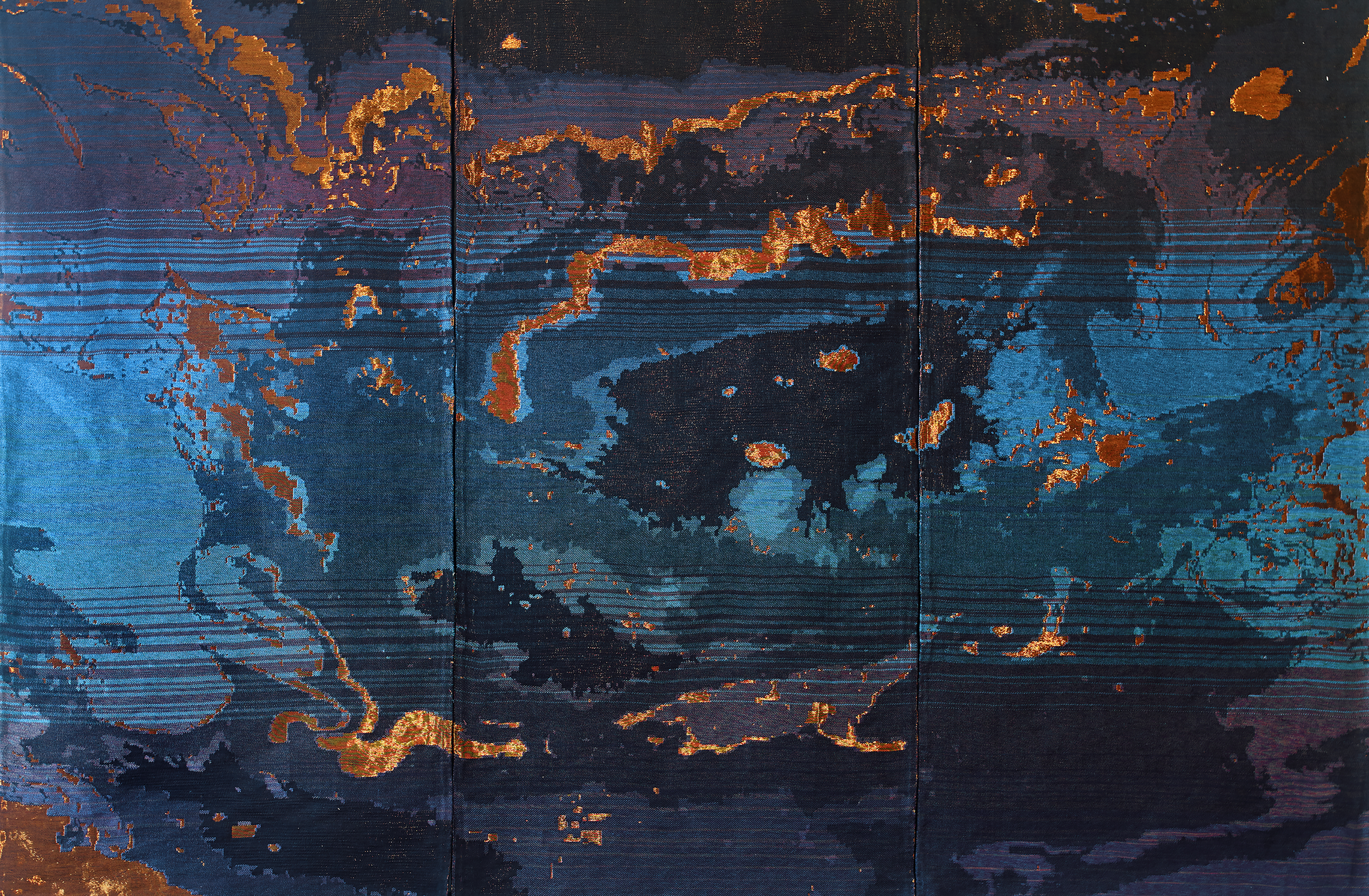Isotopic Poetics: The Petrocultural Appropriations of Lesley Battler’s Endangered Hydrocarbons
DOI:
https://doi.org/10.17742/IMAGE.PM.13.1.7Abstract
Lesley Battler’s Endangered Hydrocarbons (2015) broadens the scope of what might be considered a politicized ecopoetics. Battler’s collection, which I suggest works through a poetics of appropriation, links experimental poetic form with Anthropocene criticism in the humanities and critical studies of settler colonialism, addressing the contiguities between ecological degradation and land expropriation, while also making the appropriation of language one of its central formal concerns. In the context of the Canadian nation-state and its extractive economies, I argue that Battler’s “isotopic poetics” appears as a politically motivated formal praxis for working through the tangled exigencies of ongoing settler-colonial dispossession and the accelerating environmental crisis.References
Abel, Jordan. Un/Inhabited. Talonbooks/Project Space P, 2014.
Anker, Elizabeth S., and Rita Felski. “Introduction.” Critique and Postcritique, edited by Elizabeth S. Anker and Rita Felski, Duke UP, 2017, pp. 1-30.
Bellamy, Brent Ryan, Michael O’Driscoll, and Mark Simpson. “Introduction: Toward a Theory of Resource Aesthetics.” Postmodern Culture, vol. 26, no. 2, 2016, https://doi.org/10.1353/pmc.2016.0010.
Battler, Lesley. Endangered Hydrocarbons. Bookthug, 2015.
Battler, Lesley. “Quarclet: The Poetics of Big Oil.” Arc Poetry Magazine, https://arcpoetry.ca/2011/08/03/quarclet-lesley-battler/. Accessed 11 Sept. 2021.
Boetzkes, Amanda. “Plastic Vision and the Sight of Petroculture.” Petrocultures: Oil, Politics, Culture, edited by Sheena Wilson, et al., McGill-Queen’s UP, 2017, pp. 222-241.
Burtynsky, Edward. Oil. Steidl, 2009.
Buell, Lawrence. “Ecocriticism: Some Emerging Trends.” Qui Parle, vol. 19, no. 2, 2011, pp. 87-115.
Cariou, Warren, and Jon Gordon. “Petrography, the Tar Sands Paradise, and the Medium of Modernity.” The Goose, vol. 14, no. 2, 2014, Article 38.
Collis, Stephen, and Jordan Scott. Decomp. Coach House Books, 2013.
Davis, Heather, and Zoe Todd. “On the Importance of a Date, or Decolonizing the Anthropocene.” Acme: An International Journal for Critical Geographies, vol. 16, no. 4, 2017, pp. 761-780.
DeLoughrey, Elizabeth M. Allegories of the Anthropocene. Duke UP, 2019.
“DIACEL® Range.” CFF GmbH & Co. KG, https://www.cff.de/en/Products/DIACEL. Accessed 15 Nov. 2021.
Dowling, Sarah. “Property, Priority, Place: Rethinking the Poetics of Appropriation.” Contemporary Literature, vol. 60, no. 1, 2019, pp. 98-125.
Farrier, David. Anthropocene Poetics: Deep Time, Sacrifice Zones, and Extinction. U of Minnesota P, 2019.
Ghosh, Amitav. The Great Derangement: Climate Change and the Unthinkable. U of Chicago P, 2017.
Ghosh, Amitav. “Petrofiction: The Oil Encounter and the Novel.” The New Republic, Mar. 2, 1992, pp. 29- 34.
Goldsmith, Kenneth. “Why Conceptual Writing? Why Now?” Against Expression: An Anthology of Conceptual Writing, edited by Craig Dworkin and Kenneth Goldsmith, Northwestern UP, 2011, pp. xvii-xxii.
Gumbs, Alexis Pauline. Dub: Finding Ceremony. Duke UP, 2020.
Karpinski, Max. “‘Split With the Kind Knife’: Salvage Ethnography and Poetics of Appropriation in Jordan Abel’s The Place of Scraps.” Canadian Literature, vol. 230-231, 2016, pp. 65-84.
Keller, Lynn. Recomposing Ecopoetics: North American Poetry of the Self-Conscious Anthropocene. U of Virginia P, 2017.
King, Tiffany Lethabo. The Black Shoals: Offshore Formations of Black and Native Studies. Duke UP, 2019.
L’Abbé, Sonnet. “Erasures from the Territories Called Canada: Sharpening the Gaze at White Backgrounds.” Avant Canada: Poets, Prophets, Revolutionaries, edited by Gregory Betts and Christian Bök, Wilfrid Laurier UP, 2019, pp. 197-222.
Levant, Ezra. Ethical Oil: The Case for Canada’s Oil Sands. McClelland & Stewart, 2010.
MacDonald, Graeme. “Research Note: The Resources of Fiction.” Reviews in Cultural Theory, vol. 4, no. 2, 2013, pp. 1-24.
Martin, David. Tar Swan. NeWest P, 2018.
Nichols, Robert. Theft is Property! Dispossession and Critical Theory. Duke UP, 2019.
Nicholson, Cecily. From the Poplars. Talonbooks, 2014.
Perloff, Marjorie. Unoriginal Genius: Poetry by Other Means in the New Century. U of Chicago P, 2010.
Rauscher, Judith. “Canadian Petro-Poetics: Masculinity, Labor, and Environment in Mathew Henderson’s The Lease.” Energy in Literature: Essays on Energy and Its Social and Environmental Implications in Twentieth and Twenty-First Century Literary Texts. Edited by Paula Anca Farca, Trueheart Academic, 2014, pp. 99-111.
Simpson, Mark. “Lubricity: Smooth Oil’s Political Frictions.” Petrocultures: Oil, Politics, Culture, edited by Sheena Wilson, et al., McGill-Queen’s UP, 2017, pp. 287-318.
Sutherland, Kate. The Bones Are There. Book*hug P, 2020.
Szeman, Imre. “Conjectures on World Energy Literature: Or, What is Petroculture?” Journal of Postcolonial Writing, vol. 53, no. 3, 2017, pp. 277-288.
Unrau, Melanie Dennis. “‘Tend the rusted steel like a shepherd’: Petropoetics of Oil Work in Canada.” 2019. U of Manitoba, PhD dissertation.
Wong, Rita. “Rita Wong’s Public Sentencing Statement.” Talonbooks, https://talonbooks.com/news/rita-wong-s-public-sentencing-statement. Accessed 11 Sept. 2021.
Yusoff, Kathryn. A Billion Black Anthropocenes or None. U of Minnesota P, 2019.
Downloads
Published
How to Cite
Issue
Section
License
Copyright (c) 2022 Max Karpinski

This work is licensed under a Creative Commons Attribution-NonCommercial-NoDerivatives 4.0 International License.

This work by https://journals.library.ualberta.ca/imaginations is licensed under a Creative Commons 4.0 International License although certain works referenced herein may be separately licensed, or the author has exercised their right to fair dealing under the Canadian Copyright Act.




